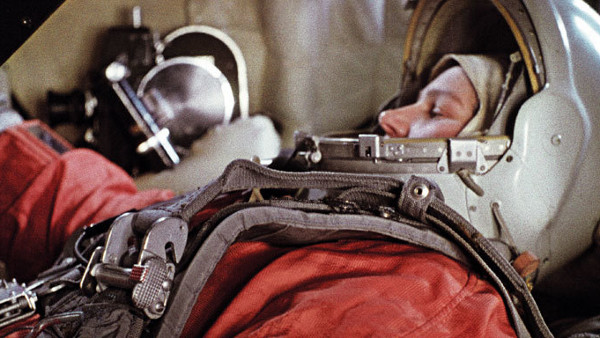The first woman to fly into space forgot the toothbrush
Dr. Valentina Tereshkova, the first woman to fly into space, realized she did not have a toothbrush when the spacecraft flew into orbit in 1963.
Dr. Valentina Tereshkova - forget to bring a toothbrush when flying into space
Speaking at the Science Museum in London on the occasion of the opening of an aerospace exhibition on September 17,
Tereshkova revealed Soviet federal space agency forgot to equip her toothbrush. When she discovered negligence, she was more than 180 km from Earth.
"Unfortunately it is true," Tereshkova, now 78, said funny. "However, resourcefulness is the nature of women, but I'm no exception. I have this toothpaste, this hand, the whole country."
According to the Telegraph, she also revealed that, when Vostok 6 flew into orbit, she quickly realized that Vostok 6 had a programming error, making it fly away from Earth, not reaching the globe in its return journey.
"Forgetting a toothbrush is just a tiny problem compared to the wrong direction of the spacecraft, flying away from Earth instead of landing , " she said. "Which means I will fly up instead of returning to the ground. However, I report the situation about the control center and they handle the error immediately."

Tereshkova astronaut leaves the ground with Vostok in 1963. (Photo: RIA Novosti).
In the 60s, such mistakes were very serious in the Soviet Union. So Sergey Korolev, who designed the Soviet spacecraft at the time, asked Tereshkova to keep the incident confidential for decades.
"I asked them not to discipline the engineers to make mistakes, because at that time they were prepared to punish him. Sergey Korolev said he would not punish if I did not reveal the incident. I kept that secret for 30 years. " she said.
A textile worker and paratrooper, Tereshkova is 26 when she flies into space. She and her spacecraft took off from Baikonur Cosmodrome by R-7 rocket.
The cameras in the spacecraft transmitted images directly to the Soviet national television when Tereshkova left the ground. Then people witnessed her talking directly to leader Nikita Khrushchev through radio.
The ambition of bringing women into the Soviet universe is evident in General Kamani's diary, the head of the astronaut training program.
- The first female astronaut wanted to go to Mars at the age of 76
- Revealing the first Russian beauties to conquer the universe
- The secret of the first Russian astronaut
"In all circumstances, we cannot let an American become the first woman to fly into space. It is an insult to Soviet women , " he wrote. Eventually the Soviet Union was 20 years ahead of the United States, becoming the first place to bring women into space.
Tereshkova, the first woman to fly into space on June 16, 1963, is also the only woman ever to fly out to Earth alone. She flew in orbit for nearly three days, photographing the earth's atmosphere, the Moon, tracking the impact of space flight on the human body.
When Vostok 6 flies, Tereshkova exclaims: "O sky, bow your head. I'm going to see you here."
During the exhibition at the Science Museum - taking place from September 18 to March of the following year - visitors will have the opportunity to admire the brown Vostok 6 spacecraft with burns due to rubbing the air when returning. again, the globe is 27,000 km / h.

Dr. Valentina Tereshkova (middle) is now 78 years old.(Photo: Rex Features).
When the ship is about 6 km above the ground, Tereshkova bounces off it and parachutes.
"A large lake below me. But I could not control the large and heavy parachute when it was about three kilometers from the ground. My original thought was: Dear God, they brought the right woman into the universe. and she must end her life underwater ".
The Science Museum also displayed many of the top-secret Soviet objects - including the Moon landing gear LK-3 (5m high). It was not until 1989 that the public became aware of its existence. They also displayed an escape chair for dogs, cosmic toilets, showers and refrigerators, a golden effigy that once flew around the Moon to test the impact of radiation. Many of the exhibits belong to private collections and have never appeared in public.
Ian Blatchford, director of the Science Museum, said that the Soviet space program was one of the great intellectual, scientific and technical achievements of the 20th century and he was excited when the museum could Gather outstanding artifacts in the program to celebrate that achievement.
- The brush can completely change the way you brush your teeth so far
- Super toothbrush do not need to use the cream is still clean
- Toothbrush to save the international space station
- How to use a toothbrush that is harmful to health is often common
- The first woman to travel on space
- Automatic toothbrush charging from the laptop
- New style toothbrushes, just attached to the mouth and 3 seconds, are clean
- When should you change your toothbrush?
- Thanks to this special brush, you only need 10 seconds to brush your teeth
- This is the reason why 99% of postpartum women are turned into
- Before having a toothbrush, how did the old people clean their teeth?
- Toothbrushes equipped with bluetooth
 The most famous scientific failures in history
The most famous scientific failures in history Mysterious genius mechanic and the machine froze time
Mysterious genius mechanic and the machine froze time The son carries the 'bad gene' of genius Albert Einstein
The son carries the 'bad gene' of genius Albert Einstein Isaac Newton
Isaac Newton